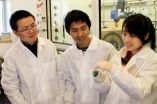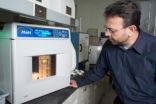(Press-News.org) Read the comments on any website and you may despair at Americans' inability to argue well. Thankfully, educators now name argumentive reasoning as one of the basics students should leave school with.
But what are these skills and how do children acquire them? Deanna Kuhn and Amanda Crowell, of Columbia University's Teachers College, have designed an innovative curriculum to foster their development and measured the results. Among their findings, published in Psychological Science, a journal of the Association for Psychological Science, dialogue is a better path to developing argument skills than writing.
"Children engage in conversation from very early on," explains Kuhn. "It has a point in real life." Fulfilling a writing assignment, on the other hand, largely entails figuring out what the teacher wants and delivering it. To the student, "that's its only function."
Kuhn and Crowell conducted a three-year intervention at an urban middle school whose students were predominantly Hispanic, African-American, and low-income. Beginning in sixth grade, two classes totaling 48 children participated; a comparison group of 23 were taught in a more conventional way.
Each year comprised four 13-class segments. Each quarter, the students entertained one social issue—beginning with subjects close to their lives, such as school discipline, and proceeding to issues of broader social consequence, such as abortion and gun control. Choosing their sides and working in groups, students prepared for debate—enumerating and evaluating reasons for their beliefs, surmising opponents' arguments, and considering counterarguments and rebuttals. Then, pairs of same-side students debated opposing pairs.
In years two and three, participants were asked during each cycle to generate questions whose answers would help them make their arguments—a way of promoting their appreciation of evidence. Soon, they not only generated many questions but also volunteered to research the answers.
The debates took place via computer—another innovation of the intervention—so the dialogue remained on the screen, promoting reflection. The cycle culminated in a lively "showdown" between the teams, in which students individually took the "hotseat" debating an opponent but could turn to their teammates for tactical "huddles." Finally, students wrote individual essays justifying their positions on the topic.
The comparison class engaged in full-class teacher-led discussions of similar topics and wrote essays—14 annually compared to the intervention groups' four.
Before the intervention and after each year, all students wrote essays on entirely new topics. The researchers analyzed these for the kinds and number of arguments—those focused on the virtues of one's own side; those addressing the opposing side ("dual perspective"); and those attempting to weigh pros and cons of each side ("integrative perspective"). They also looked at the questions the students would like answers to.
On each count, the experimental group did better, making more of the higher forms of arguments and listing more questions of substance than the control group.
Crucially, says Kuhn, the children embraced a core value of citizenship: informed argument matters. They expressed it too. "We have gotten a little complaint from nearby classrooms that it's a bit noisy," she adds.
###
For more information about this study, please contact Deanna Kuhn at dk100@columbia.edu.
The APS journal Psychological Science is the highest ranked empirical journal in psychology. For a copy of the article "Dialogic Argumentation as a Vehicle for Developing Young Adolescents' Thinking" and access to other Psychological Science research findings, please contact Tiffany Harrington at 202-293-9300 or tharrington@psychologicalscience.org .
END
HOUSTON - Researchers discovered a new, key component in the spread of lung cancer as well as a likely way to block it with drugs now in clinical trial. The study was published today (Monday, March 14) in the Journal of Clinical Investigation.
A team led by scientists at The University of Texas MD Anderson Cancer Center found a way to identify metastasis-prone lung cancer cells and then uncovered a mechanism that shifts primary tumor cells into a more deadly type of cell with the capacity to move elsewhere in the body.
"We think tumors have to learn how to metastasize ...
DENVER – Those working for healthier humans around the globe are making headway in fighting communicable diseases such as AIDS, malaria and diarrheal illness, according to research from the Frederick S. Pardee Center for International Futures in the University of Denver's (DU) Josef Korbel School of International Studies.
The center recently released the third in a series of five volumes that focus on human progress in which researchers explore topics such as education, poverty, infrastructure and governance. The latest book is Improving Global Health: Forecasting the ...
VIDEO:
When an external magnetic field is applied to the solution of nanorods, they align themselves parallel to one another like a set of tiny flashlights turned in one direction, and...
Click here for more information.
RIVERSIDE, Calif. – Chemists at the University of California, Riverside have developed tiny, nanoscale-size rods of iron oxide particles in the lab that respond to an external magnetic field in a way that could dramatically improve how visual information ...
A faster, better and cheaper desalination process enhanced by carbon nanotubes has been developed by NJIT Professor Somenath Mitra. The process creates a unique new architecture for the membrane distillation process by immobilizing carbon nanotubes in the membrane pores. Conventional approaches to desalination are thermal distillation and reverse osmosis.
"Unfortunately the current membrane distillation method is too expensive for use in countries and municipalities that need potable water," said Mitra. "Generally only industry, where waste heat is freely available, ...
A new report shows that older people who receive Guided Care, a new form of primary care, use fewer expensive health services compared to older people who receive regular primary care. Research published in the March 2011 edition of Archives of Internal Medicine found that after 20 months of a randomized controlled trial, Guided Care patients experienced, on average, 30 percent fewer home health care episodes, 21 percent fewer hospital readmissions, 16 percent fewer skilled nursing facility days, and 8 percent fewer skilled nursing facility admissions. Only the reduction ...
New biological research may be relevant to the effects of a mother's high-fat diet during pregnancy on the development of obesity in her children.
An animal study at The Children's Hospital of Philadelphia suggests that a high-fat, high-carbohydrate diet causes oxidative stress -- an excess of deleterious free radicals -- during pregnancy, predisposing the offspring to obesity and diabetes. Feeding rats antioxidants before and during pregnancy completely prevented obesity and glucose intolerance in their offspring.
If the results in animals prove to be similar ...
A new study has shown that a surgical technique called microdissection testicular sperm extraction (TESE) can effectively locate and extract viable sperm in more than one-third of adult male childhood cancer survivors who were previously considered sterile due to prior chemotherapy treatment. As a result, many of the men were subsequently able to father children with the help of in vitro fertilization. The findings offer a new option for many cancer survivors who want to have children but were thought infertile because of earlier cancer treatment.
"It was previously ...
In the early stages of human embryogenesis, a transcription factor called Twist1 plays a key regulatory role in how the embryo assumes form and function. Much later in life, however, researchers at the University of California, San Diego School of Medicine, say Twist1 can re-emerge, taking a darker and more deadly turn.
In a paper published in the March 15, 2011 issue of Cancer Cell, UCSD scientists led by Jing Yang, PhD, assistant professor of pharmacology and pediatrics, identify a unique function of Twist1 in later life: it promotes the formation of invadopodia in ...
TORONTO, Ont., March 14, 2011 -- Some physicians are prescribing opioids such as OxyContin 55 times as often as others, according to a new study led by St. Michael's Hospital and the Institute for Clinical Evaluative Sciences (ICES). The study found most opioid-related deaths occur among patients treated by physicians who frequently prescribe opioids, suggesting doctors who prescribe a lot of opioids may not be doing so safely.
"We found that the 20 per cent of family doctors who are frequent prescribers wrote 55 times as many prescriptions as the 20 per cent of family ...
COLUMBUS, Ohio – New research reveals why people read fitness and fashion magazines featuring photos of impossibly thin or muscular models -- models whose appearance highlight the readers' own flaws.
Many previous studies have found that people who are unhappy with their physical appearance feel even more dissatisfied when they are shown photos of models who have "ideal" bodies.
"So you have to wonder: why do we still buy those magazines and watch those television programs when they should just make us more dissatisfied?" said Silvia Knobloch-Westerwick, associate professor ...


